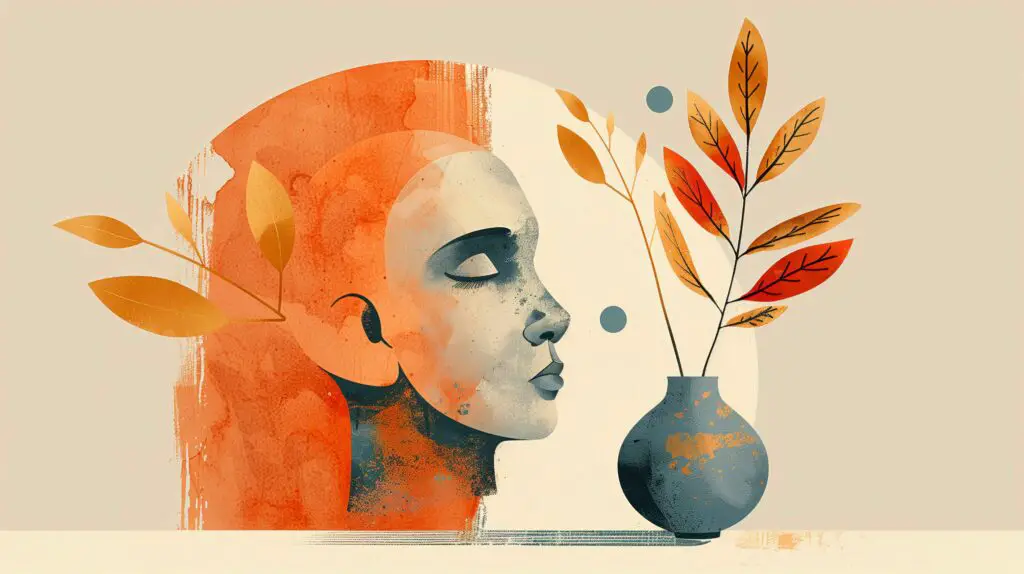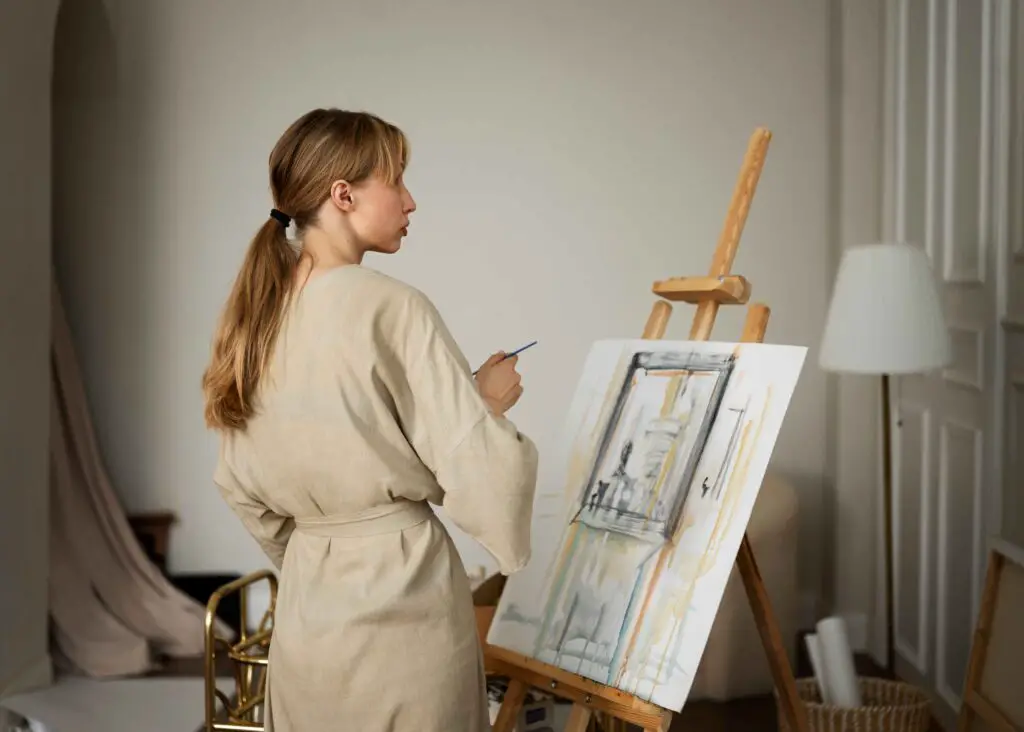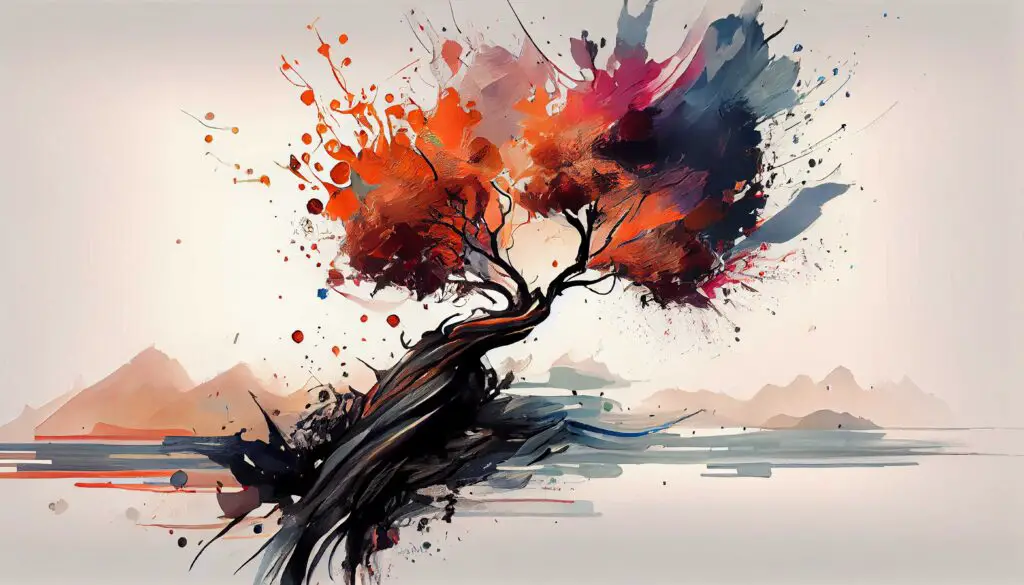Introduction:
As we enter 2024, we have seen that many people are interested in ART and want to pursue this interest as a career. However, the complete informational guide is not yet available on the market. Hence, I have developed the most potent and helpful tips for newcomers and expert art specialists. Here is the complete guide of art investing for beginners.
Many people commonly ask this question: Can I start my art career?
So the answer is “YES.” If you read all the strategies and tips I will discuss in this post and simplify them, no one will stop you from starting your art as a career.
In this article, I will give suggestions and knowledge based on my own experience, which will be very helpful for people interested in this field.

Why invest in art, and how is it a valuable investment?
1.Art market VS other markets:
Like other markets, such as the stock market, its value doesn’t fluctuate or change daily. Hence, it is a long-term and reliable investment, which is why more and more people are entering this field.
Moreover, there is a large number of investors in other markets. For example, if we see the stock market example, millions of people invest in that market. However, there is not much competition in the art market like in the stock market. There are few investors in this field. That’s why investing in art is much better than investing in other markets that have a large number of investors. So, this is a clear answer to those who doubt investing in this field.
2. Art: A Smart Investment for Passion:
Art is the name of passion. The person who wants to invest in art will have a genuine passion for that field. So, if you select a career that matches your taste and enriches your life because it is what you are passionate about, there are significant chances that you will succeed. It brings you inner pleasure and satisfaction. Other people go to auction houses and art galleries to see the art, but when you visit all these places, you’ll gain knowledge, which will be the source of your enjoyment and success.
3. Art: A Lasting Investment with No Depreciation:
Art often has long-term value. Like other assets, such as cars, furniture, and machinery, its value reduces as time passes. The older an asset is, the less valuable it will be. However, in the case of art, its value appreciates rather than depreciates because it is the only asset whose value increases with time. The older the art, the more valuable it will be. Investing in art provides handsome returns due to the stability of the market.
4. Art: A Smart Way to Beat Inflation:
Inflation lowers the purchasing power of people in society. They buy fewer goods or things with similar cash or money. Art is the only thing whose value increases with time. In the case of other commodities, when inflation happens, their supply increases, but the demand reduces because people don’t have enough money to buy those things. But the art commodities are free from inflation. It has limited supply and unlimited demand.
5. Art: An Investment to Diversify And Minimize Risk:
Like stock investors, when they analyze their portfolios, they get upset. But in the case of Art, the experience is totally different. When you see and analyze your portfolio, it makes you happy. In the case of other markets, there is a lot of risk due to price fluctuations occurring regularly, but as we discussed earlier, its value appreciates with time. Moreover, there are no price fluctuations. Hence, this investment diversifies your portfolio and minimizes your risk on investment.

How and Where to Invest in Art?
Where To Invest?
1. Set out a goal:
The first thing you should do is select a goal. You choose to either make money from this or pursue this as your passion. It might be both, I know. You either make a profit or are interested in collecting art. The one thing I can tell you is that art investment does not bring you immediate returns. You will choose to make money or build a personality and get fame.
2. Time to research:
Once you set out a goal, it’s time to research. You must know which type of art interests you and which type you should collect. This could be historical art, like some old maps, coins, etc., or new and up-and-coming art trending nowadays. Ensure that you have pure passion and interest in that type and that it matches your taste.
3. Seek professional advice:
Once your research is completed, it’s time to get advice from relevant experts. You will also know about your relevant art or goal. But you must seek expert advice that will be helpful in the future. The expert could be a dealer, an art master, or a private collector to whom you know. Although it is a low-competition field, it covers a vast market area. Hence, you must seek expert advice.
4. Decide on your budget:
Another essential thing you should consider is to analyze your budget. Anyone who knows about art knows that art can be too expensive. So you must decide how much amount you can spend. You can also seek advice from your professional on this topic.
You will have to minimize your costs so that you get massive returns. The amount of money depends on the kind of art. If you invest in historical or old art commodities, you have to spend significant capital, but the cost may be reduced if you invest in new and coming art.
Where to invest?
1. Auction Houses:
Auction houses are secondary markets where you can buy art or art commodities by making the best bid. Auction houses are of both physical and online types. Christie’s, Sotheby’s, and Phillips are widely known auction houses.
These auction centers charge their commission based on the investment. It can range from 15- 30% of the total sale price. It may be so expensive that it exceeds your total budget. However, the advantage is that the auction houses offer rare and high-quality art that others cannot provide. So, this can be the plus point of investing in auction houses. If you have considerable capital, you should go to auction houses for investment.
2. Art galleries:
Art galleries are places where art pieces are displayed for sale. They also provide high-quality material. However, unlike auction houses, art galleries do not charge commissions and stay within your budget.
Art galleries must be local shops or high-authority institutions. Art galleries also allow you to meet with art dealers to discuss and seek advice. Moreover, they provide more affordable prices if you move towards local art galleries.
3. Art Fairs:
Art fairs are broad events that may be held locally or nationally. They offer a selection where you can easily explore new and upcoming art and talent. You can buy art instantly at a negotiated price. You can meet with artists and art experts and purchase high-quality art in a single place.
4. Online platforms:
You can also get art on online platforms where you can access all art networks and markets. You can explore all types of art and purchase anything you like. You can get any kind of art from there. You can also buy art that suits your budget. You can get too expensive art from there and the cheapest art.
5. Art funds:
Art funds can help diversify your investment portfolio. Some artwork gains value with time, which may benefit people investing in art funds. Art professionals mostly manage them. There are also some risks associated with investing in art funds. Their value may fluctuate, but less than that of other stocks.
Moreover, due to its illiquidity, it is hardly ever sold quickly. However, its advantage is that it requires a meager investment and a small management fee, which benefits beginners.
6. Art shares:
Investing in art shares offers returns in dividends. It is the best way of investing for beginners who do not have much capital. You can invest in companies and industries that have an art market. Before investing, you should do a lot of research on which companies are best for investment. There are also some risks associated with this type of investment. Your investment is based on company health and performance. If the company defaults in the future, you may lose your investment. However, its advantage is that it has a meager management fee, and little investment is needed.
7. Master artworks:
These artworks were often created by old art masters in past centuries. They are famous for their rarity and historical identity. Investing in old master artworks requires huge capital and high prices because they are the rarest pieces in the world. Governments, museums, etc, often purchase them.
8. Blue chip artworks:
Blue-chip artworks are those created or established by famous artists who have proven their fame and worth with time. They require huge capital but less than old masters’ artworks. They are also more accessible for investors than old master artworks. Investing in blue-chip arts is less risky than others because they were well-established by famous artists.
9. Up and coming artworks:
Up-and-coming artworks are new artworks in the art market. They are often created by new and upcoming artist who still need to prove their worth and fame. Investing in up-and-coming artworks requires little capital due to their low value in the market. They are accessible to all those investors with less capital. There are some risks associated with up-and-coming artworks. The value of new and coming artworks is often subject to fluctuation. It is not subject to massive returns, unlike their artists prove their worth in the future.

Risks involving art investing:
1. Market fluctuation:
As we discussed earlier, there is no fear of market fluctuation in the art market like other stock markets. However, it can be volatile. It trends up and down based on people’s changes in taste or market crashes.
2. Hard to sell quickly:
We have discussed this term many times in our article earlier. Due to its illiquidity and rarity, it takes time to sell quickly. However, there is a chance to sell quickly, too, but it depends on the kind of art. Some arts have high value and demand, but due to their higher prices, they are not accessible to investors. Hence, this term is also applied to unique arts.
3. Extra expenses:
Previously, we discussed where you could invest, such as art galleries, auction houses, etc. We also discussed that buying and selling art involves extra costs and expenses. They involve management fees, auction houses, and commissions, and we invest in so many arts that require an art gallery to display. This also increases our expenses, which impresses our significant returns.
4. No regular income:
Compared to other markets or income resources, it cannot generate regular income for us because it is hard to sell quickly. When it sells, however, it generates income for us. You have to wait, as its value increases with time. If demand increases, then there are chances of selling your art quickly.
5. Regular maintenance:
Keeping your art in the best condition often requires maintenance and a specific place to place it. Hence, it increases your expenses and maintenance costs, which reduce your returns.
6. Political changes:
Changes in political conditions affect the art market. When there is inflation in society, it reduces people’s purchasing power. Hence, people stop spending on luxury things such as art. This can reduce the value of art and its chances of selling.
When to invest in art:
It is the primary and most common rule for investors to buy when prices are high and sell when prices are low. This rule applies to art investing, but you must follow a slightly different strategy. The earlier an artist enters his career, the more affordable he will be. However, there is a considerable risk of investment. These types of artists are called emerging artists.
If you’re looking for a stable investment, consider established artists. These artists usually buy art at higher prices, making it less risky. The next one is blue-chip art, which we discussed earlier.
Conclusion:
In conclusion, there are many ways to invest in art, all of which are given in the article above. All have significant advantages and disadvantages. It is up to the investor to choose which method fulfills its requirements and matches their taste. Investing in art requires research, advice, and patience. If you follow this complete guide for art investing for beginners, you can be a successful artist or investor. by the way if you are interested in such type of content and want to get more guide about investing, you may visit the website. CLICK HERE
FAQs:
1.Why invest in art, and how is it a valuable investment?
Like other markets, such as the stock market, its value doesn’t fluctuate or change daily. Hence, it is a long-term and reliable investment, which is why more and more people are entering this field.
2.How should I decide where to invest in art?
The first thing you should do is select a goal. You choose to either make money from this or pursue this as your passion.
3.What are some places where I can invest in art?
Auction houses are secondary markets where you can buy art or art commodities by making the best bid. Auction houses are of both physical and online types. Christie’s, Sotheby’s, and Phillips are widely known auction houses.
4.What are the risks involving art investing?
As we discussed earlier, there is no fear of market fluctuation in the art market like other stock markets. However, it can be volatile.
5.What should I consider when investing in up-and-coming artworks?
Up-and-coming artworks are new artworks in the art market. They are often created by new and upcoming artists who still need to prove their worth and fame.
6.When is the best time to invest in art?
It is the primary and most common rule for investors to buy when prices are high and sell when prices are low. This rule applies to art investing, but you must follow a slightly different strategy.
7.What are art funds, and how do they benefit investors?
Art funds can help diversify your investment portfolio. Some artwork gains value with time, which may benefit people investing in art funds. Art professionals mostly manage them.
8. What should I know about investing in art shares?
Investing in art shares offers returns in dividends. It is the best way of investing for beginners who do not have much capital.
9. Why is art a good way to beat inflation?
Art is the only thing whose value increases with time. In the case of other commodities, when inflation happens, their supply increases, but the demand reduces because people don’t have enough money to buy those things.
10. What are some challenges of art investing related to liquidity?
Due to its illiquidity and rarity, it takes time to sell quickly. However, there is a chance to sell quickly, too, but it depends on the kind of art.







